I am sitting at the bar at the Tam O’Shanter, a Scottish steakhouse in the Atwater Village neighborhood of northeast Los Angeles, jotting down some notes for this article. Basic research stuff: the Whos, the Whats, the Whens. I already know quite a lot about my subjects, having been a fan for nearly 30 years. If my teenage self knew that one day I would be interviewing his comedy heroes, then underwear would most likely need a change. I had to be prepared. There’s great pressure in not letting your former self down.
A bartender takes my order. He possesses a thick Scottish brogue, made even more indecipherable due to his Bane-like carbon filtered face mask. The Tam O’Shanter, which has been around for 100 years, serves a fine certified Angus beef prime rib with all the Scottish trimmings.
The bartender, whose name is Martin, refills my club soda. He glances at my purple spiral notebook. “What are you working on, lad?” I tell him that I am a writer and that I am prepping a piece on the Canadian comedy troupe The Kids in the Hall, who in a matter of days were set to see the release of the sixth season of their acclaimed sketch comedy show (just a mere 27 years after getting the ax), as well as a brand new documentary detailing their nearly 40 years together. Both are now available to stream on Amazon Prime.
“I know Dave Foley,” Martin says, eyes slightly bulging over the bridge of his mask. “Great fucking guy. He would come in here and we’d close the place down together, talking about Kids in the Hall shit. I fucking love that guy.”
Martin begins to do his impression of Mr. Tyzik, the lonely Eastern European curmudgeon, made famous by Kids member Mark McKinney, with a propensity to “crush the heads” of random passersby.
As Martin proceeds to crush my head, a second bartender joins us. “‘Girl Drink Drunk’ is their best sketch,” says Martin’s co-worker, Brian. The two bartenders are trading memorable quotes back and forth as yet another bartender, a blond ponytailed gentleman whose name I don’t catch, makes his appearance, back from his 30-minute break. Miming holding a cigar and in his best Cabbage Head voice, Mr. Ponytail exclaims, “I’m the King of the Mercy Fuck!”
My Prince Charlie Cut (extra thick, always bone-in) and its four sides arrive and I tuck in. I enjoy listening to the cacophonous sounds of three Scottish bartenders reciting the greatest hits of The Kids in the Hall.
I. Of the origins and the initial struggles of The Kids in the Hall, with some miscellaneous reflections
Before they were one, they were two separate comedy troupes. Rivals, in a way. The Audience came out of Calgary’s famous Loose Moose Theatre, headed by improv guru Keith Johnstone. It was at the Loose Moose where Mark McKinney, the son of a diplomat, and Bruce McCulloch, a former jock and punk rock-obsessed oddity from Edmonton first met. Whereas McKinney was a born entertainer with a gift of disappearing into character, like his early hero Peter Sellers, McCulloch was an angry young man with a brain brimming full of weird, esoteric ideas. They were not instant friends. One of their first interactions was close to also being their last. In a dark theater, McCulloch watched on as McKinney was rehearsing on a piano for a planned stage routine. Growing tired of hearing the same notes being plucked over and over, McCulloch finally snapped. “How fucking long are you gonna need to rehearse?!” A slow start to friendship, but eventually the two men won each other over with their respected talents.
Word travels far and wide, especially in comedy circles, where it seems everyone’s self-esteem lives on the razor’s edge. Funny people often frighten each other. You might be King Shit now, but the threat of somebody funnier than you coming up the ranks always hangs over a comedian’s head — nobody really wants to be a number two. McKinney and McCulloch kept hearing about this group out of Toronto’s Second City called The Kids in the Hall. Apparently they were good. Really good. And it wasn’t long before the two groups found themselves on the same improv show bill. Two performers from the Toronto crew impressed McKinney and McCulloch. Their names were Dave Foley and Kevin McDonald.

Whereas it took some time for the Loose Moose boys to bond, Foley and McDonald seemed destined to meet one another. ”I met Kevin in my very first Second City workshop,” says Foley, in the new documentary The Kids in the Hall: Comedy Punks, directed by Reginald Harkema. “We were randomly paired up for an exercise.”
McDonald remembers that the two strangers “had chemistry right away,” adding, “Comedy chemistry is sorta like falling in love with someone” The two strangers were making each other laugh before they knew the other’s name. They were two reincarnated vaudevillians, both capable of playing either the straight man or the fool.
Foley and McDonald quickly found they had a lot in common. Both performers were the sons of alcoholic fathers. For Foley, he learned to develop a detached, whip-smart sense of humor. Think Groucho Marx with a Canadian disposition. McDonald was more of a neurotic; the typical co-dependent. Which is to be expected when your father speaks to you like this. “Comedy doesn’t have to come from a quagmire,” McKinney says in the documentary. “But a lot of us are broken toys.”
In time, the four comedians warmed to each other enough to begin to write material together. But first, they had to settle on a name. McKinney wanted to remain The Audience. It was, after all, his title. The others found it a bit pretentious. They flipped for it. “Thank God I lost that one,” McKinney says. The newly formed troupe started performing around Toronto, usually with a guest or two — including a handful of funny females. “And I just looked up at one point, and it was just us four,” says McCulloch. “Then Scott came.”
Enter York University student and aspiring movie star Scott Thompson. “I wanted to be James Dean,” Thompson says in the doc. That all changed the night he caught a Kids performance. During the show, there was a moment when the performers announced to the audience that they could find a jelly donut under their seat. “That scene went horribly,” McDonald says. “And they started throwing the donuts at us.” The main culprit of the donut firing squad? Thompson. McDonald continues, “This is typical Scott Thompson: As he’s throwing the donuts and telling us to ‘fuck off,’ he’s saying to someone, ‘I’m gonna join that troupe.’”
An utterly fearless performer, Thompson eventually won the others over and he was invited into their circle. “Scott brought our level up,” McCulloch says. “Because he would want to eat the stage. And we had to eat the stage as well to compete with him.” Thompson sobbed during his induction into this new, screwed up family. In the film, Thompson remarks, “The moment they invited me in, I was never leaving.”
[embedded content][embedded content]
Queen Street in Toronto is a cultural Mecca for Bohemian-minded Canucks. The east-west thoroughfare features some of the city’s best restaurants and clubs, including a performance space named The Rivoli. In 1984, there wasn’t a cooler place to be in the entire Great White North. McCulloch remembers Queen Street as “the most important half-mile in the world.” For the next few years, The Kids would grind it out, writing and performing new material, often to very few paying audience members. “I don’t know how we survived,” McKinney remembers. “The first year and a half at The Rivoli, it was, like, 17, maybe 20 people; 35 on a good night.”
The lack of audience did not dissuade the group. They were learning to trust each other, to respect each other’s talents. The material got better. And, eventually, so did show attendance. After years of struggling, The Kids were now selling out shows. Three hundred to 400 paying fans were witnessing the births of some now-iconic comedy creations, such as the aforementioned Cabbage Head, a cigar-smoking pussyhound who’s not above using his deformity to secure some pity sex.
The documentary maximizes a treasure trove of grainy footage from this time. The energy on stage is undeniable. For die-hard Kids fans, like myself, it’s like being able to watch the Hamburg-era Beatles. We even catch a slight glimpse of a young Mike Myers guest performing with his friends. “I always aspired to be in The Kids in the Hall,” Myers tells the documentary crew, which includes his brother Paul, who’s wonderful 2018 book on the troupe, entitled Kids in the Hall: One Dumb Guy, serves as the baseline for the film. The cache of footage comes courtesy of writer and friend of the group Paul Bellini, known best to fans as Man in Towel, who was then an aspiring filmmaker. Armed with his low-grade video camera, Bellini captured almost every show. God bless him for doing that. Over Zoom, Myers, the author, explains the zeitgeist that was Toronto in the late 80s: “When The Kids started doing comedy downtown, there was a vibe going on; everyone wanted to be a filmmaker, comedian, fashion designer, punk rocker. In hindsight, I don’t think I ever knew how cool it was until the distance from it. It was a neat scene.”
Scouts from Saturday Night Live eventually made the pilgrimage to The Rivoli. With doors locked, The Kids performed for the brass from New York. It went well, but there was a slight snag — the television institution only wanted two of them, Bruce and Mark, and even then, only as writers. Losing two vital organs, The Kids appeared to be dying. They staged a final sold-out performance at their home club. McKinney and McCulloch moved to the Big Apple. The other three floundered in their absence.
The two writers never quite fit in at SNL. Their material was too weird, too singular to mesh with a network show. With their contracts up, it appeared that they both would be heading back to Canada, tail between their legs. Lorne Michaels (you know who he is, right?) had other plans. He beckoned the remaining three members to join Bruce and Mark in New York. The idea was to put them through a comedy bootcamp, by having them perform in front of hostile American audiences used to brick-wall comics who recycled jokes about airline food, with the end goal of producing their own sketch show for television.
Even in a city as cultured as New York, The Kids were freaks: Canadian, punk, and, thanks to the unabashedly-out Thompson, gay. They wore women’s clothing. They attacked organized religion with the ferocity of one of Michael Vick’s pit bulls. They were early adapters to the notion of zero fucks given.
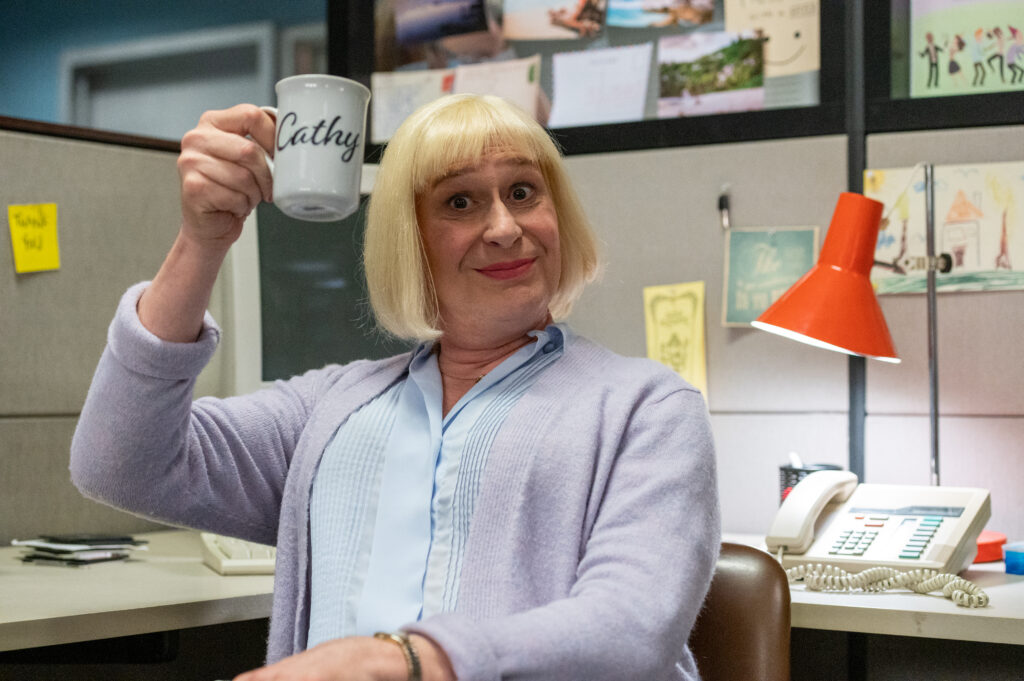
When Thompson joined the group, he wasn’t simply there to play one-dimensional swishes. He was too smart and too talented a writer to cash in on cheap laughs. Buddy Cole, his greatest creation, stood out as a self-assured, Alpha Queen. Sure, there were gay characters on TV at the time, but most were cast off as the annoying neighbor (see: Jim J. Bullock as Monroe in Too Close For Comfort) who always appeared a little sleepy. Most of the time, it was only inferred that the character was gay (again, see Monroe). They were weak, whereas Buddy was not. He even liked it a little rough. Both creator and creation were always in total control. Often done in front of a live studio audience, Thompson/Cole conducted the crowd like a maestro, allowing them to gut-laugh at punchlines, but, with a simple hand gesture, telling them when to pipe down, because Buddy had more to say.
Thompson enabled all the other members of The Kids to embrace a certain femininity that is inherent to male actors (yes, even for someone like John Wayne, whose birth name was Marion. His small feet made him step like a dancer.) The Kids, of course, are most famous for playing all the female characters in their sketches. In this recent piece from Slate, writer Tabitha Vidaurri explains the importance of their rooted, un-mocking portrayals of women better than I could. But I will say, as a Midwestern teenager in the ‘90s, The Kids expanded my own view of the world (they enlisted drag queens into the opening credits of season 3) and they did it with pitch-perfect humor. (Hint, hint, Modern Progressives)
The original series of The Kids in the Hall ran for five seasons from 1989 to 1995, across a handful of networks: CBC, Canada’s top broadcast network, aired the entire run, but, in America, the show started out on HBO, before moving to late-nights on CBS. It wasn’t until a fledgling cable station called Comedy Central began running reruns of the show a few years after its cancellation that American audiences really took notice.
One of those Americans was a pimple-faced teenager. The summer before my junior year in high school was a rather miserable one. Every morning at 6 a.m. I would report for duty at Weed King, a lawn care company that serviced numerous apartment complexes around the greater Columbus, Ohio, area. It was not an easy job. Mornings would be spent hauling 50-pound bags of mulch to be spread amongst the flower beds. At lunch all the other young men and I would gather in a circle and conduct our own version of Fight Club. Two people would enter the circle and wrestle as the others cheered on or wolfed down bologna sandwiches. I got my ass kicked. A lot. At 2 p.m. the whistle blew and Tony and I would hop in my ’88 Ford Taurus, peeling out, hoping to get back to Tony’s mom’s duplex in time to watch our newest obsession: a Canadian comedy show where the dudes looked like ladies.
The show became a lifeline for us during this horrible employment. We would quote jokes back and forth as we fired out black-tar, mulch-infused snot rockers from our noses.
One morning, an older kid asked what we were giggling about and we made the mistake of telling him. The next morning, apparently after having watched a Kids episode, he delighted in telling the others how Tony and I loved this “gay show” starring a bunch of cross-dressers. I was furious and when you see red, sometimes you forget things, like, the guy you’re about to take a swing at has pinned you three times already in the Fight Club circle. My punch connected, but I was no Buster Douglas. Next thing I knew I was on the ground being pummeled. The others, after a few moments, pulled my assailant off of me. The Weed King himself, a 25-year-old stoner, fired me on the spot. Burying each other’s face in the mud at lunch was one thing. Throwing jabs was a bridge too far, apparently. Tony quit in solidarity and for the rest of the summer we holed up in his basement bedroom, smoking pot and drinking wine coolers I stole from my mother’s cabinet and watched our favorite “gay show.”
II. Love is growing up
The Kids in the Hall: Comedy Punks, which premiered to rave reviews at the 2021 SXSW Film Festival, is, perhaps, the most romantic movie I’ve watched in some time. Ostensibly, the documentary is about the rise and fall and rebirth of, arguably, the greatest sketch comedy troupe ever (Monty Python excelled in movies, but, for my money, The Kids’ series had a higher batting average than Flying Circus), but, in fact, it’s about finding those who allow you to reach the full potential of your being. “This is a love story,” Dave Foley remarks towards the end of the film.
OK, here are some quick thoughts on other famous sketch programs:
SNL: The influence is fairly obvious, although that Fuck Authority vibe of the early seasons comes directly from The National Lampoon, where Chevy, Belushi, Gilda and Bill Murray cut their teeth. For my money, the best era is the Phil Hartman-Dana Carvey years. Both men are neck and neck for best Cast Member Ever.
SCTV: This was a program that, as a child, I heard more about than actually watched. The series did birth the ode to beer surrealist film Strange Brew, which was my favorite movie from ages 10 to 11 (Major League took the top spot in 1989, where it held the crown til Kingpin premiered in 1996)
IN LIVING COLOR: Fearless, boundary-pushing, and, thanks to mostly topical material, completely out-dated now. Well, some of it still slaps.
KEY & PEELE: There’s a certain joy in watching two best buds crack each other up.
THAT MITCHELL & WEBB LOOK: Was this series better than Monty Python? Or The Kids in the Hall? Or even Little Britain? No. But they did manage to write the single best sketch of all-time.
Harkema, who began his career as an editor for Canadian avant-gardist Guy Maddin, perfectly moves us through the major events in the life of the group. We watch as five men are brought together by some cosmic broker, each of whom from different backgrounds, possessing far different temperaments. Things were not always copacetic. How could they be? Comedy isn’t pretty. They fought like brothers, even lovers, would. Chairs were thrown. Hurtful words tossed around like pithy punchlines; too young to know that the only ones who can truly hurt you are the ones you love.
Throughout the film, The Kids are often compared to various musical acts — The Clash, for example, is who comes to Mike Myers’ mind when discussing the group — but bands and comedy troupes are quite different. For example, it would’ve been odd to witness Terry Chimes step up to the mic and start belting out “Janie Jones.” Chimes had his role, keeping the beat. With a comedy troupe, there is no frontman. Or rather, it’s only frontmen. “It’s taken me decades to realize, even partially, what my role in all of this was,” Mark McKinney tells SPIN over video conferencing. “I feel like the other guys are much more used to chaos, coming from the backgrounds they do.”
Even years removed from their salad days at The Rivoli, The Kids were still grappling with how to best communicate with each other. Take their 2001 tour film Same Guys, New Dresses. After the debacle of Brain Candy, their thus far only attempt at a feature length movie, Same Guys is a behind the scenes look at a dysfunctional family, one that can’t even agree on how to best get from city to city. You know what, just watch the scene.
Did that angst and ego bleed into the material? Would we even care about the troupe all these years later if they had simply gotten along swimmingly from the start? Is there a better self-starter than trying to top a co-members’ hilarious sketch? “You need the rivalry, everyone fighting for the center,” McKinney says. “I think it’s all kinda good.” Forget The Clash. The Kids in the Hall sound more akin to Fleetwood Mac.
McCulloch put it this way: “It was our essential need…the need to ‘get it out.’ There was something about all of us having to get it out and it wasn’t perfect — and the thing we had to get out of ourselves, of course it was creativity and weird ideas, like “30 Helens,” but it was also the pain we had from our really warped childhoods.”
[embedded content][embedded content]
I realize I might’ve lost a few of you when I offered up the opinion that The Kids were better (at least on television) than Monty Python. Believe me, I love Monty Python. They created some brilliant stuff. Who doesn’t love the pure silliness of The Fish Slapping Dance or the Ministry of Silly Walks. And to be sure, The Kids have their fair share of absurd sketches. But what pushes The Kids over the top, for me, are the more grounded sketches. (At times, I’ve been tempted to type “skit,” but I remember on a commentary track for some episode on their DVD box set, McCulloch saying, apropos of nothing, “We call them sketches, never skits”).
Creating material that mimicked the discord of their wonder years led to not only some hilarious and memorable moments, but saw them reach for an artistry in writing and character that simply has not been duplicated. Most sketch comedy consists of some thrift store purchased wigs, a funny premise, and dogged notion that it better be under three minutes. Whereas The Kids took their time with the material, allowing it to breathe and thus allowing for deeper, more sustained laughs. Their characters are not the product of the costumes. The Kids created three-dimensional characters, most of whom would not be out of place in a Raymond Carver short story. There was no drama in a Python sketch. It never once mattered if the dead parrot could be returned or not.
Take a look at “The Vacation” sketch, one of the recurring sketches featuring middle-aged married couple Fran and Gordon, with their beleaguered son Brian. It tells the story of a family vacation put on hold due to a mother’s worry over her hard-partying teenage progeny. Dad wants to get the show on the road, but Brian is missing in action. “Let’s go,” says Gordon. “I can feel the traffic building! That’s my commuter instinct talking!” When Mom won’t budge, her hips locked due to anxiety over her son, Gordon pleads for her to get into the car. “Come on, Fran! My beard is coming in.”
In “Drunk Dad Advice,” McCulloch takes his 13-year-old son away from his birthday party to a large rock in the middle of nowhere for a little man-to-man talk. The talk, of course, is one-sided, and not at all coherent. Dressed in a blue cardigan and fronting a well-trimmed mustache, McCulloch’s character produces a pint of whisky from a paper bag and begins to level with the kid: “There are certain parts about being a man one just has to experience. So like my father before me, you’re gonna watch your dad get pathetically drunk.”
As part of the same call with McKinney and McCulloch, I asked Thompson if there was ever any response from The Kids’s actual fathers. “My father never said anything about it. Same with my mother. She would say, ‘Oh, that’s not me. That’s my twin sister Fran’. My aunt Fran was actually quite proud.”
McCulloch steps in: “Well, my father did. He knew “Salty Ham” was him. That was actually stolen from a slice in my life. I remember my father saying, ‘Salty Ham is funny, but “You Millionaires” is the funniest thing you’ve ever done.’”
III. The future’s uncertain and the end of always near (Hey, I’m a Doors fan)
The weird thing about show business, unlike almost every other occupation, is that it’s never over. This industry loves a comeback story. The people who manage to work for years upon years are the ones who just plow forward, no matter the set-back, because you have no idea what is around the corner waiting for you. Think of Louie Anderson being given the role of a lifetime as matriarch Christine Baskets in Baskets so late in his career (and, sadly, unbeknownst to all, late in his life). After years of being relegated to Vegas residencies, Anderson went on to become a three-time Emmy Award winner. You just never know.
For The Kids, it’s been a similar journey. During footage of their “final show” at The Rivoli, before McKinney and McCulloch come back from SNL, and they all have their own five-season run on television, I paused the documentary and said to my wife, “Look at their faces. They think this is the end.”
There have been numerous ups and downs for the troupe: the cancellation of the original series after five seasons; the creative tension that saw Foley more or less iced out of the group during Brain Candy; the mending of friendships and subsequent tours that reignited their fan base. And now, almost 40 years after first performing together, we get a new batch of sketches, with many familiar faces: Buddy Cole; Lorne Michaels-inspired TV exec Don Roritor and his peon Marv; Gavin, the nerdy boy with a million facts. We are also blessed with new, strong material, including a recurring bit which sees Foley playing a wacky morning DJ during the apocalypse whose only available record is a 45 of ‘70s disco hit “Brand New Key.” With each needle drop, Foley’s eyes deaden, as lifeless as the world outside.
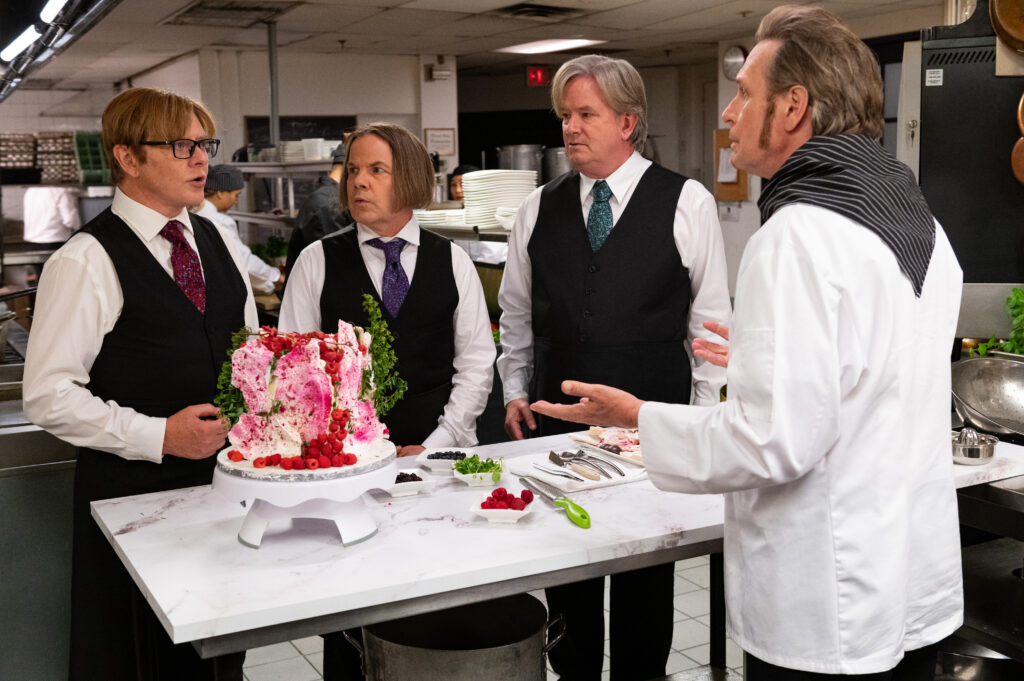
Unlike Python, as well as that first cast at SNL, the Kids are unfrozen in time. The format resolutions and aspect ratios certainly place The Kids squarely in the go-go ‘90s, but the material is evergreen. “They never did topical material,” Nick McKinney, brother of Mark, as well as an executive producer on the documentary, told me over Zoom. “They were doing stuff nobody else was writing about: suburban angst; shitty white-collar jobs. Society doesn’t date. The particulars might change over time, but it’s not like they were doing Gerald Ford impressions or commercial parodies.” That’s not to say the fans are solely decked out in flannel and Doc Martens. “You go to one of their live shows now, there are 62-year-old guys and ladies, but you also see 20-year-olds. They’re still speaking to a new audience.
“As Bruce once said, ‘Everything I touch turns to cult.’”
PROLOGUE
“How was the prime rib, lad?” Martin asks. I tell him everything was delicious and settle up. I jot down a few more notes, reminders to watch a few classic old sketches, most of which I embedded into this article.
Martin hands me back my credit card, a pen, and asks for my John Hancock. From behind his heavy-duty mask, I can sense a decent-sized smile on his face.
“Tell Dave Foley I owe him a steak!”
Mr. Foley was unavailable for our group interview. So, in the event that he is not only reading this article, but makes it to the end (is anybody still here?)…Dave, go with the Prince Charlie cut. With creamed corn.



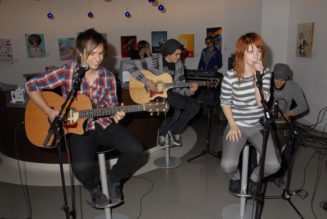

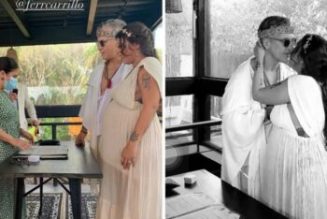
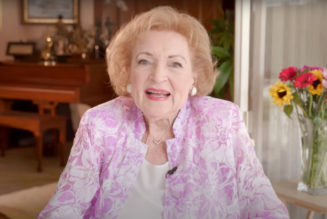
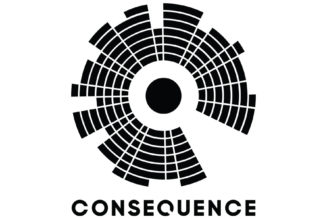
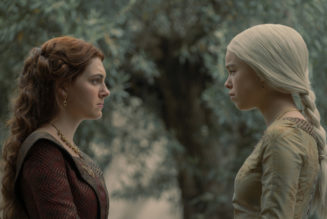

Tagged: Documentary, FEATURES, kids in the hall